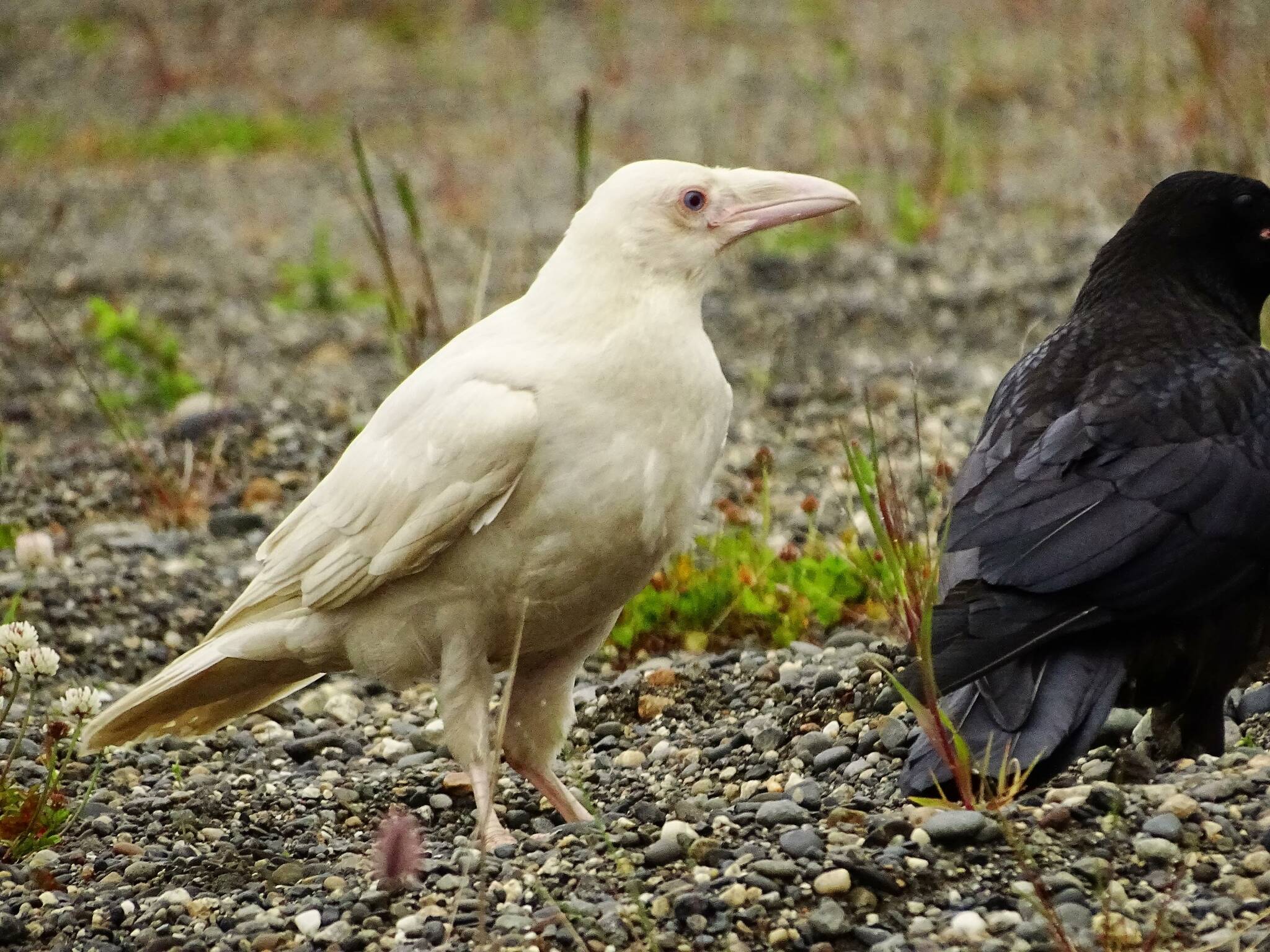An unusually colored raven has been turning heads around the central Kenai Peninsula for the last few weeks — standing out from the crowd with bright white feathers.
Gregory Messimer is a local photographer with a day job that makes for a lot of time driving around town. He said Thursday that most of his work is “roadside photography,” that he likes to showcase nature that exists right on our own periphery.
“It’s just showing that you can see all these things without having to go on a little expedition,” he said. “You could be connected with nature — just keep your eyes open.”
That’s why a co-worker told him about the bird. He was able to track it down north of Kenai and has been posting photos of it to Instagram since mid-June. Others on social media have shared photos of their own encounters.
A white raven is a result of a rare genetic mutation, and could be either albino or leucistic, Messimer said. He believes it’s the latter, because while albinism would result in a complete absence of pigment in the bird, he said the eyes of his subject appear to be a light blue.
In the weeks since first encountering the raven, Messimer said he’s been reading everything he can about it. He said that many cultures assign a significance to a white raven as a portent, either of good or bad. The common thread, Messimer said, is the white raven representing change.
White ravens, because they’re missing melanin and other pigments, have a tougher time surviving until and through winter. The black coloration of other ravens absorbs heat, while the white will reflect it — the bird’s natural metabolism isn’t adapted to compensate. Melanin also protects from sunburn and cancer, and it bolsters the keratin in the feathers.
Messimer said that’s why the tips of a seagull’s wings are black, because they’re more firm.
Of course, being a bright white, the raven is also going to stick out.
Messimer said he hopes to get the word out about the bird both so folks can observe a rare oddity of nature located in their own community, but also so they can watch out for the raven if its health starts to decline.
“People peer into nature a little bit more if they have something to look for,” he said. If the bird is leucistic, another may well be born again if the same parents reproduce and the same recessive genes are paired.
Photos and videos of the white raven can be found on Messimer’s Instagram account at @gmessy30.
Reach reporter Jake Dye at jacob.dye@peninsulaclarion.com.



